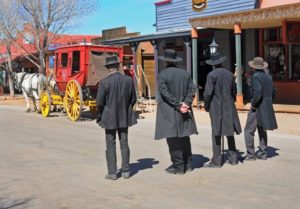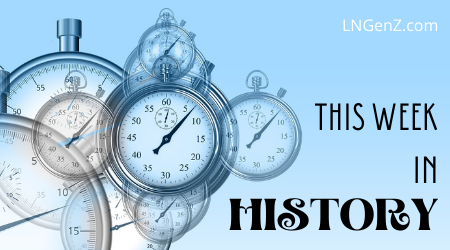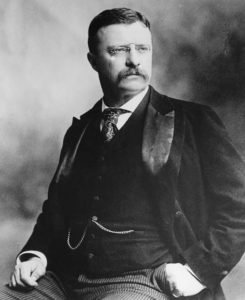-
January
-
February
- This Week in History: February 6-12 – Lesson
- This Week in History: February 6-12 – Quiz
- This Week in History: February 13-19 – Lesson
- This Week in History: February 13-19 – Quiz
- This Week in History: February 20-26 – Lesson
- This Week in History: February 20-26 – Quiz
- This Week in History: February 27-March 5 – Lesson
- This Week in History: February 27-March 5 – Quiz
-
March
- This Week in History: March 6-12 – Lesson
- This Week in History: March 6-12 – Quiz
- This Week in History: March 13-19 – Lesson
- This Week in History: March 13-19 – Quiz
- This Week in History: March 20-26 – Lesson
- This Week in History: March 20-26 – Quiz
- This Week in History: March 27-April 2 – Lesson
- This Week in History: March 27-April 2 – Quiz
-
April
- This Week in History April 3-9 – Lesson
- This Week in History April 3-9 – Quiz
- This Week in History: April 10-16 – Lesson
- This Week in History: April 10-16 – Quiz
- This Week in History: April 17-23 – Lesson
- This Week in History: April 17-23 – Quiz
- This Week in History: April 24-30 – Lesson
- This Week in History: April 24-30 – Quiz
-
May
- This Week in History: May 1 – 7 – Lesson
- This Week in History: May 1 – 7 – Quiz
- This Week in History: May 8 – 14 – Lesson
- This Week in History: May 8 – 14 – Quiz
- This Week in History: May 15 – 21 – Lesson
- This Week in History: May 15 – 21 – Quiz
- This Week in History: May 22-28 – Lesson
- This Week in History: May 22-28 – Quiz
- This Week in History: May 29-June 4 – Lesson
- This Week in History: May 29-June 4 – Quiz
-
June
- This Week in History: June 5 – 11 – Lesson
- This Week in History: June 5 – 11 – Quiz
- This Week in History: June 12-18 – Lesson
- This Week in History: June 12-18 – Quiz
- This Week in History: June 19-25 – Lesson
- This Week in History: June 19-25 – Quiz
- This Week in History: June 26 – July 2 – Lesson
- This Week in History: June 26 – July 2 – Quiz
-
July
- This Week in History: July 3 – 9 – Lesson
- This Week in History: July 3 – 9 – Quiz
- This Week in History: July 10 – 16 – Lesson
- This Week in History: July 10 – 16 – Quiz
- This Week in History July 17 – 23 – Lesson
- This Week in History July 17 – 23 – Quiz
- This Week in History – July 24-30 – Lesson
- This Week in History – July 24-30 – Quiz
- This Week in History: July 31 – August 6 – Lesson
- This Week in History: July 31 – August 6 – Quiz
-
August
- This Week in History: August 7-13 – Lesson
- This Week in History: August 7-13 – Quiz
- This Week in History: August 14 – 20 – Lesson
- This Week in History: August 14 – 20 – Quiz
- This Week in History: August 21 – 27 – Lesson
- This Week in History: August 21 – 27 – Quiz
- This Week in History: August 28 – September 3 – Lesson
- This Week in History: August 28 – September 3 – Quiz
-
September
- This Week in History: September 4 – 10 – Lesson
- This Week in History: September 4 – 10 – Quiz
- This Week in History: September 11 -17 – Lesson
- This Week in History: September 11 -17 – Quiz
- This Week in History: September 18 – 24 – Lesson
- This Week in History: September 18 – 24 – Quiz
- This Week in History: September 25 – October 1 – Lesson
- This Week in History: September 25 – October 1 – Quiz
-
October
- This Week in History: October 2-8 – Lesson
- This Week in History: October 2-8 – Quiz
- This Week in History: October 9 –15 – Lesson
- This Week in History: October 9 –15 – Quiz
- This Week in History: October 16–22 – Lesson
- This Week in History: October 16–22 – Quiz
- This Week in History: October 23–29 – Lesson
- This Week in History: October 23 –29 – Quiz
- This Week in History: October 30 – November 5 – Lesson
- This Week in History: October 30 – November 5 – Quiz
-
November
- This Week in History: November 6 – 12 – Lesson
- This Week in History: November 6 – 12 – Quiz
- This Week in History: November 13 – 19 – Lesson
- This Week in History: November 13 – 19 – Quiz
- This Week in History: November 20 – 26 – Lesson
- This Week in History: November 20 – 26 – Quiz
- This Week in History: November 27- December 3 – Lesson
- This Week in History: November 27- December 3 – Quiz
-
December
This Week in History: October 23–29 – Lesson
Shootout at the O.K. Corral: A classic story of the American West.
“Study history, study history. In history lies all the secrets of statecraft.” ~ Winston Churchill
The shootout at the O.K. Corral in Tombstone, Arizona, is one of America’s greatest Wild West stories. Movies have been made about the event, including Tombstone in the 1990s. Wyatt Earp and “Doc” Holliday are some of the most well-known historical Americans today due to a shootout that lasted just 30 seconds.
In many versions of the story, the Earps and Doc Holliday are painted as the heroes while the “Cowboys” including the Clanton brothers, are considered the bad guys. But in reality, neither side was free from mischief and bad deeds.
Leading up to the Shootout

(Photo by Robert Alexander/Getty Images)
Before moving to the town of Tombstone, Wyatt Earp had been a police officer, a lawman. He moved to Arizona to mine for silver, bringing his brothers Virgil and Morgan with him. Virgil became the town’s marshal. But the brothers also had other businesses, including running saloons.
The “Cowboys,” as the other gang was called, consisted of the Clanton and the McLaury brothers. They were known thieves and often participated in cattle rustling, stealing the animals and selling them to other ranchers or for beef.
When an ordinance made it illegal to carry guns within the town’s limits, the Cowboys became upset – they never went anywhere without their weapons. They threatened to disobey the law and were said to wear them anyway.
On October 25, 1881, Ike Clanton (a Cowboy) and Doc Holliday had a disagreement in a saloon, and even though the fight was broken up, Clanton continued to make threats against Doc and the Earps. He was reportedly wearing several guns.
Virgil, as the marshal, disarmed Ike and then took him before a judge, where he was fined for breaking the city ordinance. Threats and disregard for the rule continued until the men met at the Old Kindersley Corral (O.K. Corral), and the infamous shootout happened. Three of the Cowboys died and the others ran away. The Earp brothers and Doc Holliday were arrested for murder, but the judge dropped the charges and said they were within their rights to defend themselves.
Other Notable History Mentions
October 23, 1956: Students and workers started a Hungarian uprising when they demonstrated in Budapest against Communist rule.
 October 23, 1983: During the Lebanese Civil War, terrorists drove into the US and French peacekeeping headquarters in Beirut. They had a truckload of TNT, which exploded, killing 58 French paratroopers and 241 US Marines.
October 23, 1983: During the Lebanese Civil War, terrorists drove into the US and French peacekeeping headquarters in Beirut. They had a truckload of TNT, which exploded, killing 58 French paratroopers and 241 US Marines.
October 23, 1989: Hungary declared itself a republic.
October 23, 1990: After students protested, Prime Minister Vitaly Masol of Ukraine became the first Soviet official of that rank to quit because of public pressure.
October 24, 1861: The first transcontinental telegram was sent, from California’s Chief Justice Stephen J. Field in San Francisco to President Abraham Lincoln in Washington.
October 24, 1922: The Irish Parliament voted for an Irish Free State to be adopted into the Constitution. This ended the Irish War of Independence against the British.
October 24, 1929: “Black Thursday” happened at the New York Stock Exchange. People started panic selling nearly 13 million shares. The day was part of the Wall Street Crash that signaled the start of the Great Depression. “Black Tuesday” happened five days later and saw 16 million shares sold.
October 24, 1931: Al Capone, known as “Scarface,” a Chicago gangster, was sentenced to 11 years in jail for tax evasion. He was later transferred to Alcatraz in San Francisco.
October 24, 1945: The United Nations was founded.
October 25, 1854: The Charge of the Light Brigade happened during the Crimean War. Lord Cardigan led the British cavalry in Balaclava against the Russians. The move was a disaster for the British, who faced heavy casualties and were forced to retreat after riding straight into Russian artillery. The poem “The Charge of the Light Brigade” by Alfred, Lord Tennyson was published just six weeks after the event.
October 25, 1955: Austria took back its sovereignty after the last of the Allied forces left after World War II. The country had been occupied by German Nazis from 1938 until 1945.
October 25-30, 1983: The US invaded Grenada, a Caribbean Island, to restore “order and democracy.”
October 26, 1825: The Erie Canal opened. It was the first major waterway in America that was man-made. It linked Lake Erie with the Hudson River, costing $7 million and taking eight years to finish.
October 26, 1951: For the second time, Winston Churchill became prime minister of Britain.
October 26, 1955: Ngo Dinh Diem declared himself president of South Vietnam, while claiming the region as a republic.
October 27, 1787: In a New York City newspaper, the first of 85 Federalist Papers were printed. These essays encouraged America to adopt the US Constitution and were written by Alexander Hamilton, James Madison, and John Jay.

(Photo by Jakub Porzycki/NurPhoto via Getty Images)
October 27, 1904: The New York City subway started running. While it wasn’t the first underground rail system in the world, it soon became the largest.
October 28, 1636: Harvard University was founded in Cambridge, Massachusetts.
October 28, 1886: The Statue of Liberty was dedicated in New York.
October 28, 1918: The Republic of Czechoslovakia was founded. It was created from the Bohemia, Slovakia, and Moravia provinces. The country lasted until 1993, when it was split into two nations: the Czech Republic and Slovakia.
October 28, 1919: Prohibition began after the National Prohibition Act was passed by Congress. This forbade the sale of alcohol across the US and lasted nearly 14 years.
October 28, 1949: Helen Anderson was appointed ambassador to Denmark by President Harry Truman, making her the first woman ambassador.
October 28, 1962: The Cuban Missile Crisis was resolved. It had been a 13-day stand-off between the United States and Soviet Russia. The Soviets had placed nuclear missiles in Cuba, and US President John F. Kennedy surrounded Cuba with naval ships in response. This led to fears that the two superpowers were on the brink of nuclear war, but luckily the crisis ended when the Soviets agreed to remove the missiles and Kennedy promised he would not invade Cuba.
October 29, 1929: The stock market crashed, and the Great Depression followed.
Famous Birthdays

Theodore Roosevelt (Getty Images)
Pablo Picasso (October 24, 1881) was born in Malaga, Spain. He was an artist, painter, and sculptor.
Hillary Rodham Clinton (October 26, 1947) was born in Park Ridge, Illinois. The wife of former President Bill Clinton, she also served as Secretary of State under President Obama. In 2016, she ran against Donald Trump to become president.
James Cook (October 27, 1728) was born in Yorkshire, England. A navigator, he explored the Hawaiian Islands, New Zealand, and Australia.
Theodore Roosevelt (October 27, 1858) was born in New York City. He was the 26th president of the US.
Dylan Thomas (October 27, 1914) was born in Swansea, Wales. He was a poet and playwright. Some of his works include The World I breathe, Portrait of the Artist as a Young Dog, and Under Milk Wood.
Dr. Jonas Salk (October 28, 1914) was born in New York City. He developed the vaccine for Polio.
Bill Gates (October 28, 1955) was born in Seattle, Washington. He co-founded Microsoft.